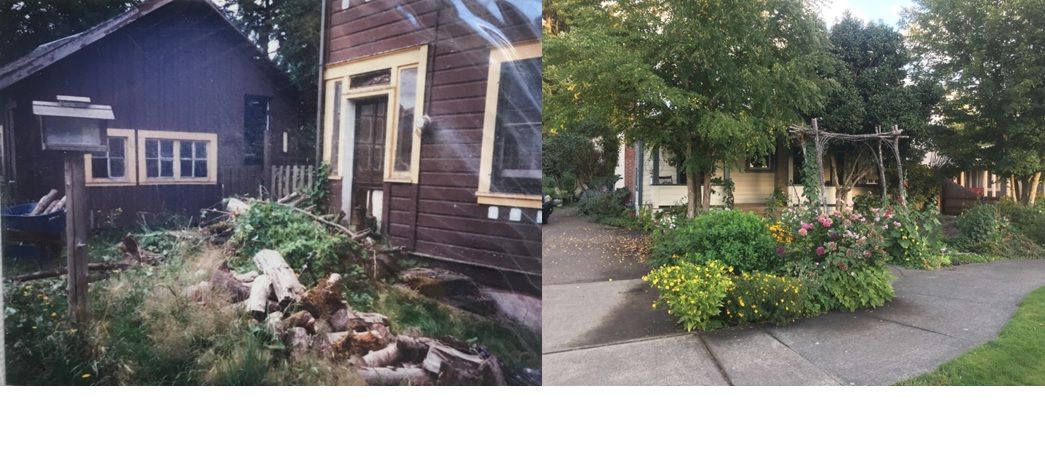Diamond in the Rough
Feb 24
/
Katie Skurja

“See I am making all things new.” Revelation 21:5
Twenty-six years ago, my husband and I had an opportunity to by a house through a first-time home-buyers program intended to refurbish homes in rural areas. Before we even saw it, we both felt like God was leading us to the old farmhouse that was listed just west of our church. It was described as “needs some work,” which we quickly found out was the understatement of the year.
Twenty-six years ago, my husband and I had an opportunity to by a house through a first-time home-buyers program intended to refurbish homes in rural areas. Before we even saw it, we both felt like God was leading us to the old farmhouse that was listed just west of our church. It was described as “needs some work,” which we quickly found out was the understatement of the year.
The house was less than appealing from a human perspective. Inside and out, it was besieged with garbage, broken-down appliances, and dilapidated furniture. Heaps of forgotten junk littered the yard, partially hidden by wild morning-glory vines and blackberry bushes. As we walked the property that Sunday afternoon, we questioned whether we had heard God correctly, but again we felt a strong sense: “That is your house.”
During our first walk through the house, we were assaulted with smells of mangy dog, overfull kitty-litter boxes, and general filth. With the honesty and tactlessness of a child, our five year-old son repeatedly made comments about how “stinky” it was, despite the fact that the residents were home. As we left, he asked if we could get a “new smell” if we bought the house. Friends who saw the house wondered why we would want to embark on such a project. It seemed foolish to some. It was only through the eyes, God had given us for the house that we could go forward. Behind the filth, the junk, the peeling paint and wallpaper, and the general state of disrepair, there was a charming house. We could see the house was a diamond in the rough.
The exterior of the house was brown with white polka dots. When the current residents had bought the old house, they were required by the lender to insulate it. Small holes were drilled into the siding at regular intervals in order to blow in insulation. The holes were plugged up and covered over with white primer. Fourteen years later, it stood still unpainted even though the neighbors had offered to help. We soon found out that throughout town the eyesore was known as the “polka-dot” house.
When we finally were able to spray on primer, the house soaked it up like a thirsty person who had been lost in the desert and stumbled into an oasis. Already, the house looked like it had been transformed. People would stop on their walks and thank us for fixing up the old place. As we continued to make repairs, paint, and plant flowers, the house began to look loved again.
It took several months to make the house livable, but the major projects continued for the first two or three years. As if we did not have enough to work on, three years after our original painting job, we noticed in sections of the house where the old paint had been hard-baked on, it was now peeling off in big pieces. The application of new paint reacted with the old, causing a loosening. What previously could not be budged was now coming off in huge swaths of multi-layered paint. It took another big push to scrape, sand, and repaint about a third of the house. Since then we have had to re-do another big section in the same manner. As the old paint continued to loosen, we would eventually have scraped the whole house down to the original old-growth cedar. Twenty-six years later, we are still working on projects. It is a never-ending process of fixing up the old and maintaining the new.
The process of fixing up the old farmhouse has been akin to uncovering the Imago Dei, or image of God, in an individual: the diamond inside each of us. It is a slow, painful, and incremental process that happens inside of relationship. Many friends have helped us over the years – we couldn’t have done it without the help of others. It takes a lot of patience, perseverance, grace, and trusting in the vision God gave us from the beginning: there is a diamond underneath all that crap.
A metaphor I often use to discuss the diamond beauty of the Imago Dei and the brokenness of humanity is… a Peanut M&M®.
The Imago Dei diamond is like the peanut inside of a Peanut M&M®. Like each unique human, every diamond is slightly different, yet made of the same substance because we are all created in the image of God.
The chocolate layer of the Peanut M&M® represents the aspects of ourselves that we do not like or are ashamed of—the shame we want to hide from God, ourselves, and others. The chocolate does not destroy the peanut underneath, just as our brokenness does not change the fact that we are created in the image of God. However, the chocolate effectively hides the peanut.
The potential mess of the chocolate layer is the reason for the outer layer: the candy shell. The candy coating represents the many masks we all wear to hide the undesirable parts of ourselves. It is hard, shiny, and attractive enough to obscure the mess of the chocolate layer. The candy coating is our protection, our attempt at pulling our act together and making ourselves acceptable to others. Sadly, it also conceals the treasure of the peanut underneath.
In the beginning stages of excavating the diamond, it can very labor-intensive, requiring a lot of concerted energy. It can be the consuming focus of our lives for a while. Like the new sections of peeling paint, God will continue to expose areas of our shame and False Selves (candy coating) that need redeeming. We are usually not ready for it to all come off at once.
May we have eyes to see the diamond in ourselves and in each other, no matter how much garbage is covering it.

Katie Skurja
Catherine “Katie” Skurja is the founder and director of Imago Dei Ministries. Deeply rooted in and dedicated to Trinitarian principles, the ministry’s purpose is to help people everywhere engage in a Christ-centered healing process that transforms relationships with God, self, and others. Her greatest passion is to accompany people in the journey of discovering who they are in their Imago Dei (image of God). With training as a counselor, spiritual director, and in the work of inner healing prayer, Katie combines the three disciplines to help guide people through the layers of false self and shame in order to bring about the integration of the whole person. Katie and Jim have been married for 33 years and have two grown sons as well as a few “adopted” daughters with whom they share life. She loves to garden, hike, walk on the beach, cook, and read.
Catherine “Katie” Skurja is the founder and director of Imago Dei Ministries. Deeply rooted in and dedicated to Trinitarian principles, the ministry’s purpose is to help people everywhere engage in a Christ-centered healing process that transforms relationships with God, self, and others. Her greatest passion is to accompany people in the journey of discovering who they are in their Imago Dei (image of God). With training as a counselor, spiritual director, and in the work of inner healing prayer, Katie combines the three disciplines to help guide people through the layers of false self and shame in order to bring about the integration of the whole person. Katie and Jim have been married for 33 years and have two grown sons as well as a few “adopted” daughters with whom they share life. She loves to garden, hike, walk on the beach, cook, and read.
https://www.idmin.org/

